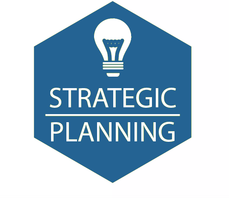 “By failing to prepare, you are preparing to fail.” ― Benjamin Franklin
“By failing to prepare, you are preparing to fail.” ― Benjamin Franklin
Parthenon Management Group (PMG) recognizes the need for its managed organizations to have a clear strategic plan which guides the work of your organization and its departments throughout the year. We have found that organizations without a strategic plan tend to become more focused on short-term operations and therefore lack the ability to accomplish larger strategic objectives. A strategic plan can offer a road-map for the organization which can allow for you to accomplish large goals by breaking them down into manageable steps in an achievable time frame. PMG has led many organizations in the development or refining of their strategic plan. We have a proven process for developing a strategic plan and annual work plan outlined below.
Strategic Planning Process: Our CEO, Sarah Timm, will work with a Strategic Planning work group to guide the planning process. PMG offers a template to begin the planning. The work group will begin by looking at the mission, core values and vision for the department. Once these overarching and guiding statements are developed, the work group brainstorms and develops the overarching measurable goals that they think the department can and should accomplish in the next three to five years. These goals should directly correlate to the mission, vision and core values. During the development of these goals it is often important to hear from varying constituencies whose feedback and investment in the plan are important for its success. To this end, we often conduct surveys or targeted focus groups to gain more information that can help the task force formulate the goals.
The next step in the strategic planning process is the development of objectives or targets that correlate to each goal. Objectives are the specific, measurable, desired outcomes associated with the realization of its goals. These objectives guide the work or operational plan for the group. Each objective is then assigned to a person or group to accomplish and report back. The objectives are refined more often since the strategies are reviewed annually and as the objectives are achieved, new objectives are developed to continue working to achieve the goal.
The next step in the process is the development of strategies that correlate to each objective. Strategies outline the overall approach and the specific steps you will take to achieve each objective and goal. They will be task oriented and a ‘strategy champion’ will be assigned to each task. This allows the strategic planning work group to ensure their priorities are aligning with the strategic plan and the plan is guiding the work of the organization. Each objective should have three to five strategies. Once the strategies to each objective are determined, we would advise sending the plan to all possible constituents for feedback and further suggestions. This not only allows the task force to get feedback on their progress, but also allows the constituents to feel invested in its future.
Once these steps of the plan are complete with the work group, they will have the full strategic plan approved. Once the plan is complete, the real work of the group begins. The assigned objectives and strategies become the operational plan for each person or department for that year. A process can be put in place to evaluate and check-in on the progress. Annually, it is important to see where we are in achieving the objectives. PMG recommends a review of the plan annually. PMG can offer an annual “pulse report” on where each objective and strategy stands in accomplishing the goal, and help strategize for shifting objectives and strategies or developing new ones.
Get the conversation started by scheduling your strategic planning session today.

